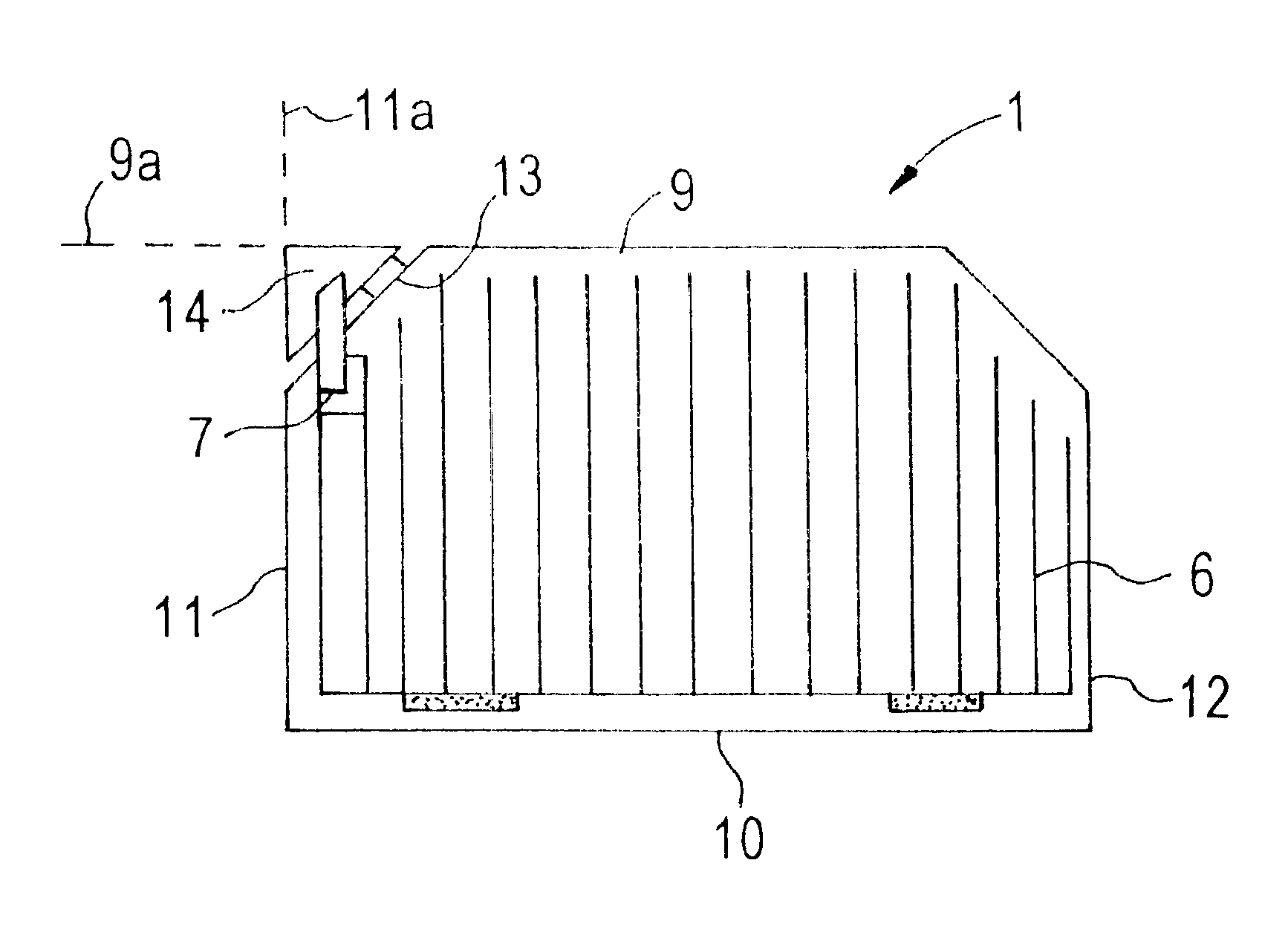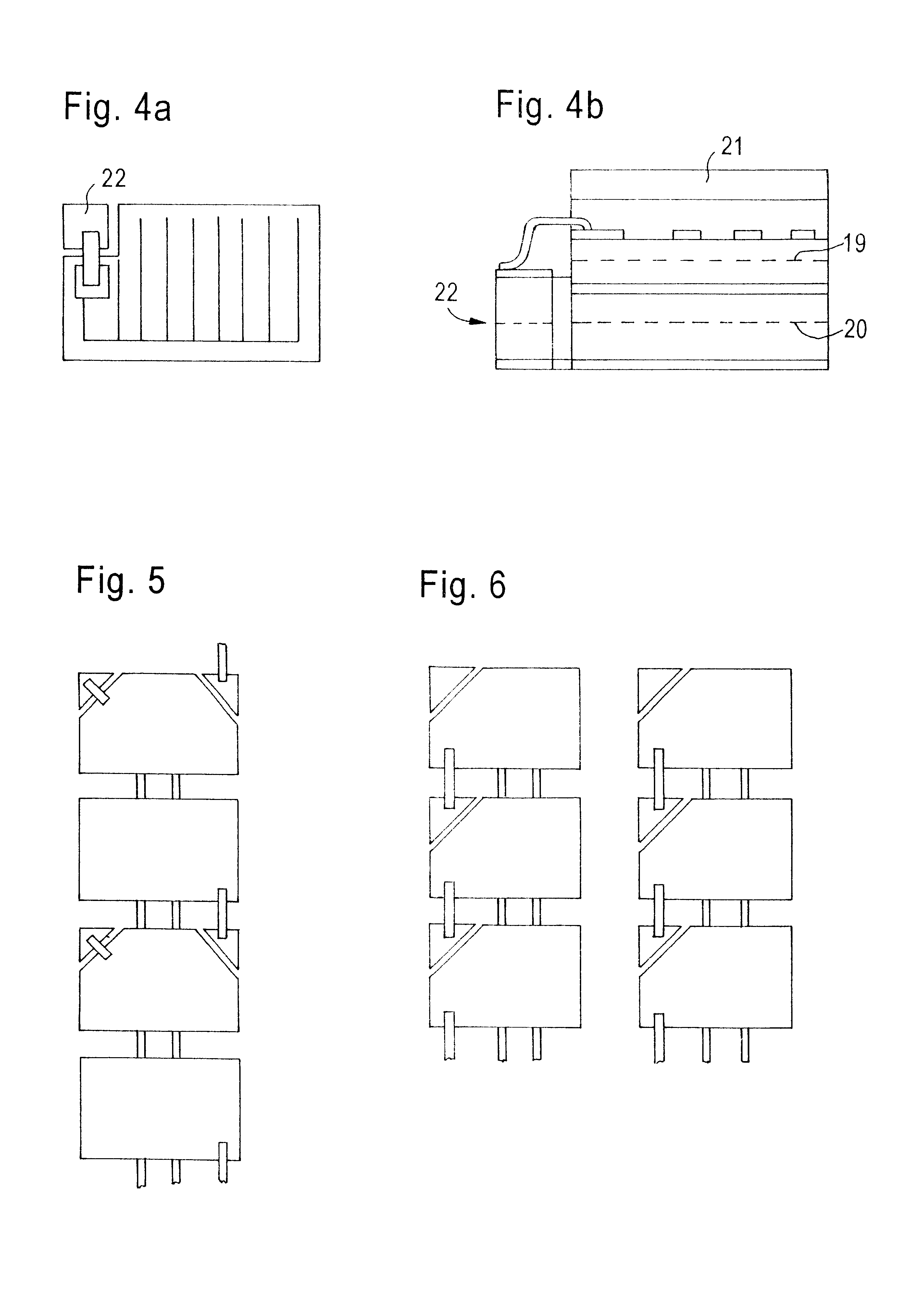Solar cell arrangements
a solar cell and arrangement technology, applied in the direction of secondary cell servicing/maintenance, electrochemical generators, transportation and packaging, etc., can solve the problems of loss of active solar cell area, current being driven in reverse, and cell may irreversibly break down
- Summary
- Abstract
- Description
- Claims
- Application Information
AI Technical Summary
Benefits of technology
Problems solved by technology
Method used
Image
Examples
Embodiment Construction
With reference to FIGS. 1 and 2, a solar cell 1 comprises a germanium substrate 2 on which is grown an expitaxial GaAs layer 3 doped to give p and n type layers 4 and 5 with a junction between them. A front metal contact grid 6 located on the GaAs layer 3 includes a supplementary pad 7. There is a rear metal layer 8 on the rear surface of the germanium substrate 2.
In plan view, the solar cell 1 is generally rectangular having a parallel sides 9 and 10, and sides 11 and 12 with two of the corners of the rectangle being cropped. At one of the cropped corners, a third oblique side 13 exists between the mutually orthogonal sides 9 and 11. In the region bounded by projections 9a of side 9 and 11a of side 11 and the oblique side 13, a silicon protection diode 14 is located. In this embodiment, the protection diode 14 is of triangular section in plan view. The diode 14 is electrically connected across the cell 1 by a front interconnect 15 to the supplementary pad 7 and by a back interconne...
PUM
 Login to View More
Login to View More Abstract
Description
Claims
Application Information
 Login to View More
Login to View More - R&D
- Intellectual Property
- Life Sciences
- Materials
- Tech Scout
- Unparalleled Data Quality
- Higher Quality Content
- 60% Fewer Hallucinations
Browse by: Latest US Patents, China's latest patents, Technical Efficacy Thesaurus, Application Domain, Technology Topic, Popular Technical Reports.
© 2025 PatSnap. All rights reserved.Legal|Privacy policy|Modern Slavery Act Transparency Statement|Sitemap|About US| Contact US: help@patsnap.com



